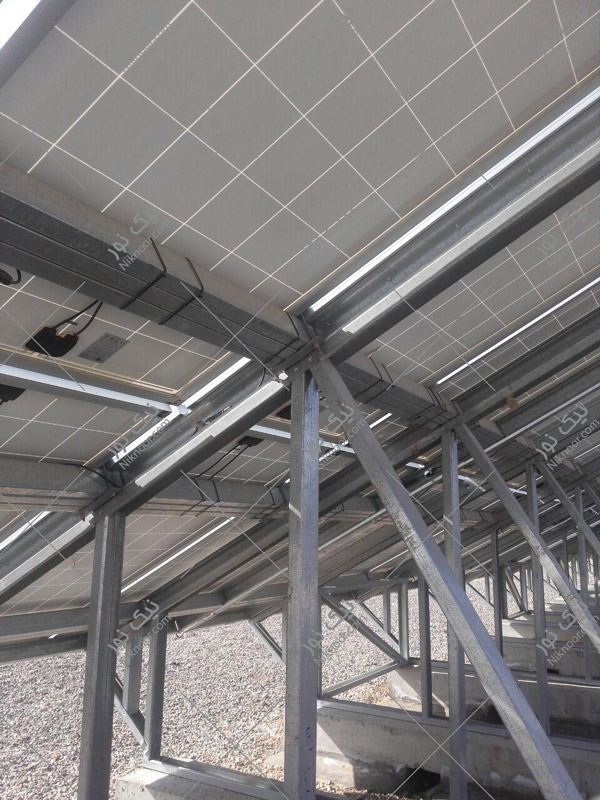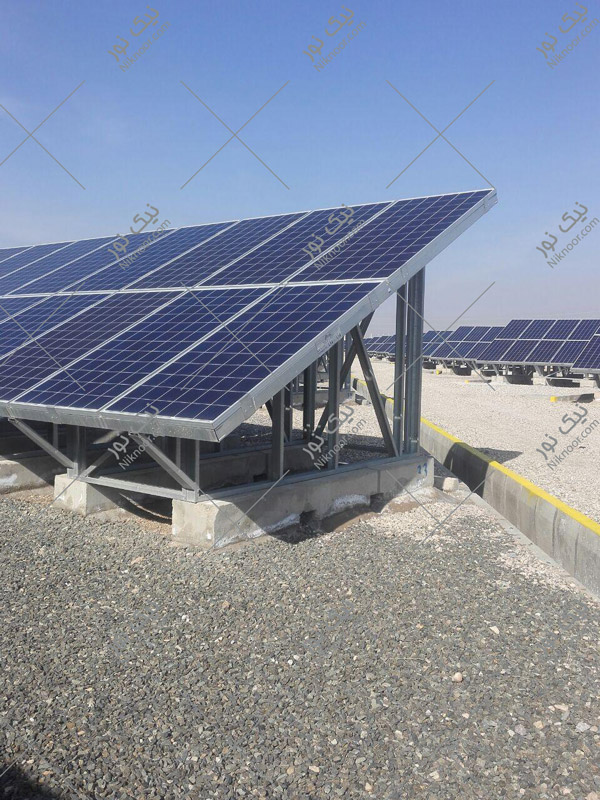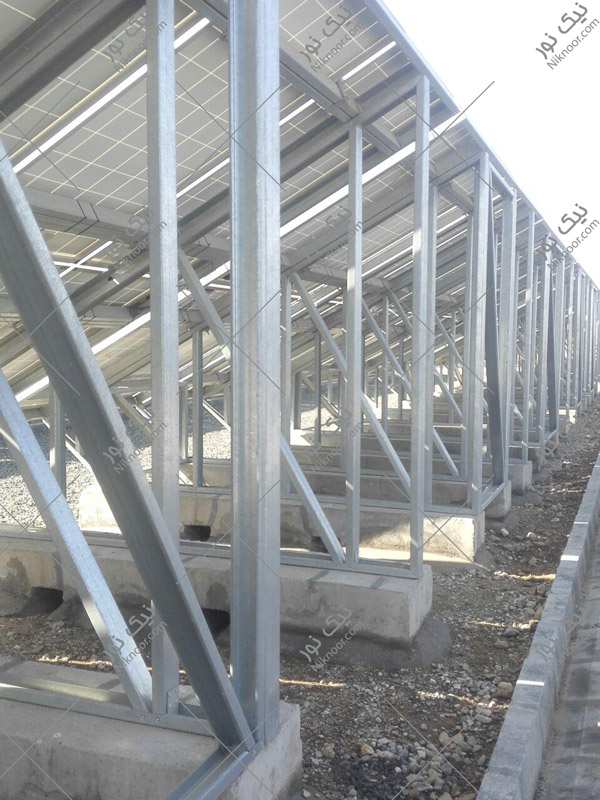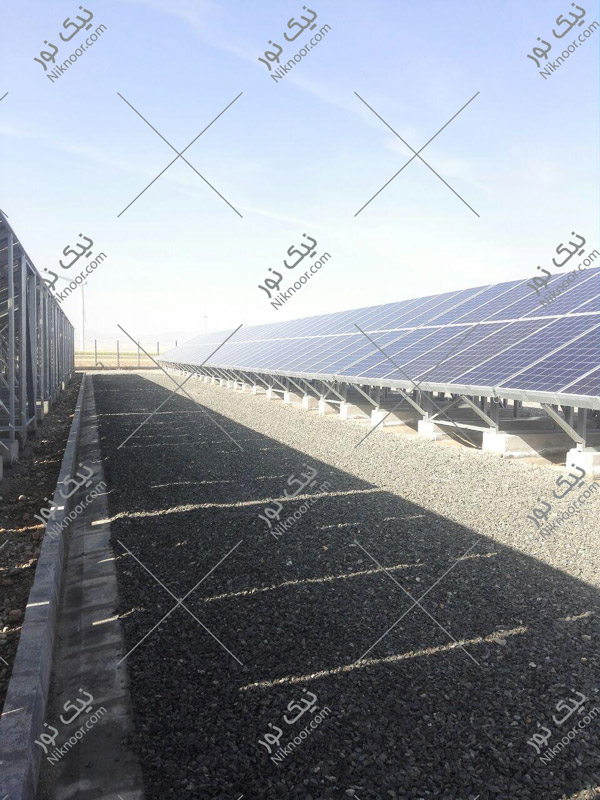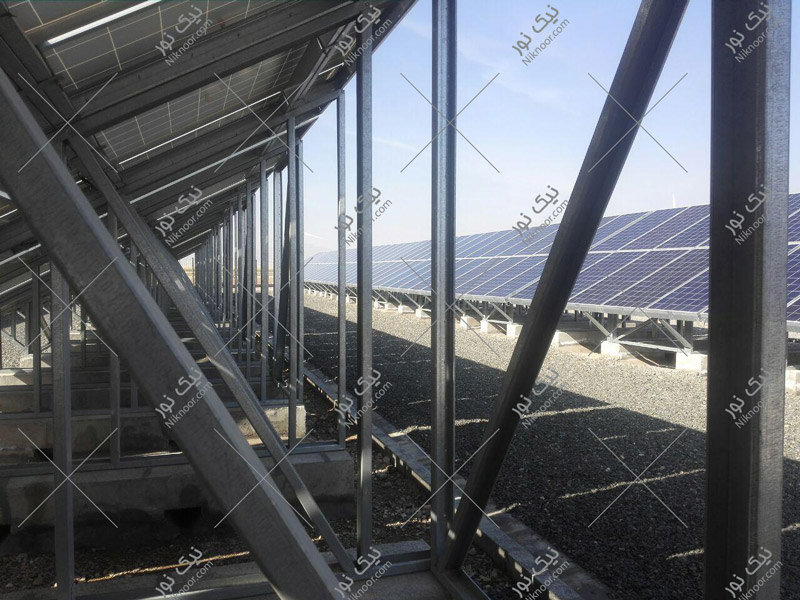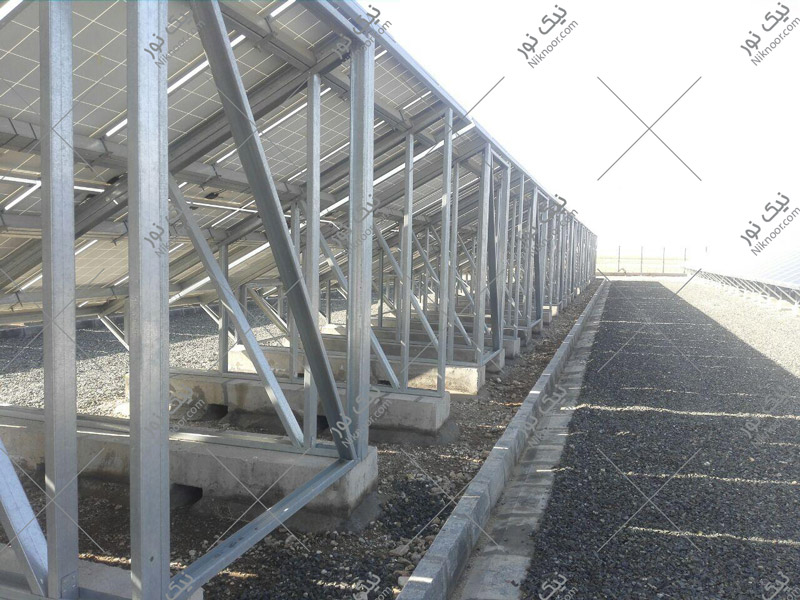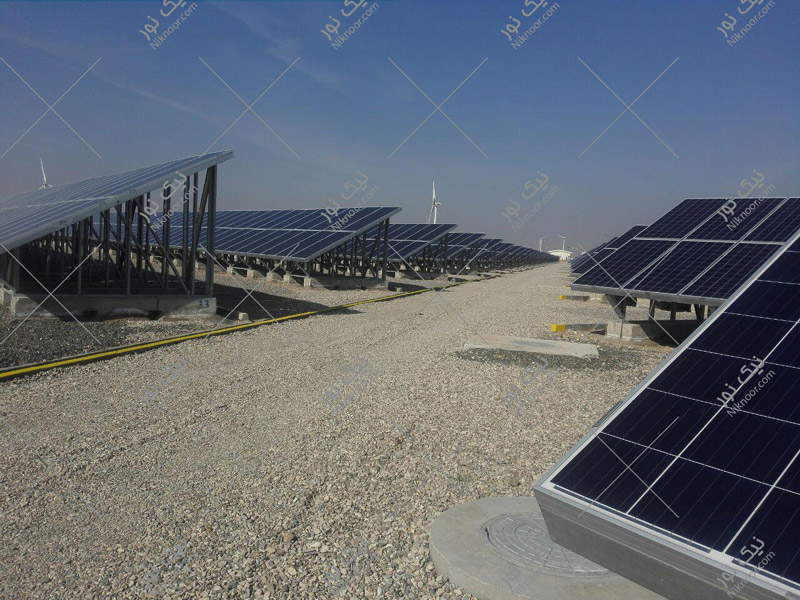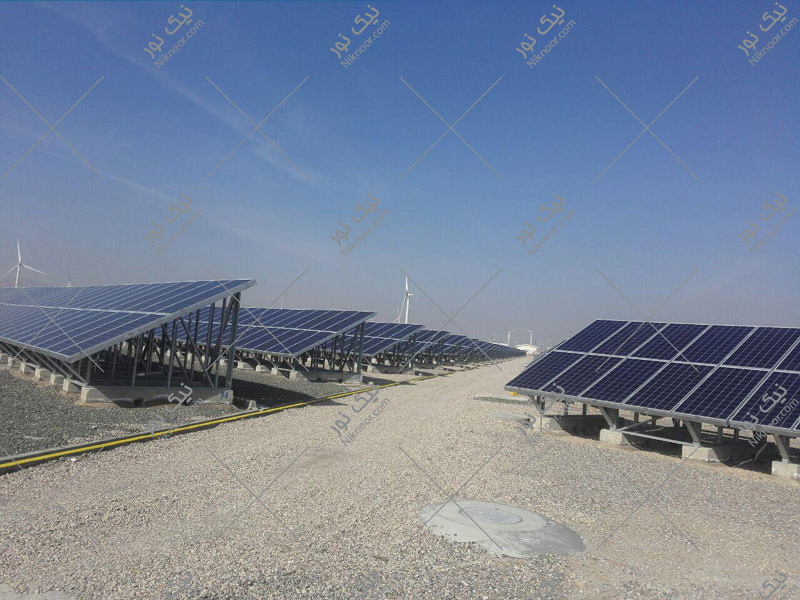Solar Panel Structure
The solar panel base, or solar panel structure, refers to a framework on which solar panels are installed and positioned at a specific angle towards the sky to capture sunlight. Typically, solar panel structures are made of aluminum or galvanized iron with a hot-dip coating.
The durability and material of the structure are highly important as it must withstand humidity and high wind speeds while securely holding the solar panel. For this reason, solar power plants place great emphasis on the structure.
The solar base is usually available in three forms: box-shaped, channel-shaped, and angle-shaped. Each of these types is used based on specific applications. These bases can be attached to the ground either by driving (or burying for compatible terrains) or by using prefabricated foundations and bolts to ensure maximum stability.
Solar Panel Structure Drawing
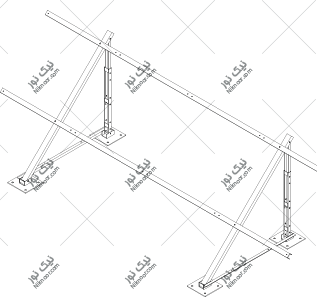
Adjustable Column
Base Plate
Solar Panel Installation Stand

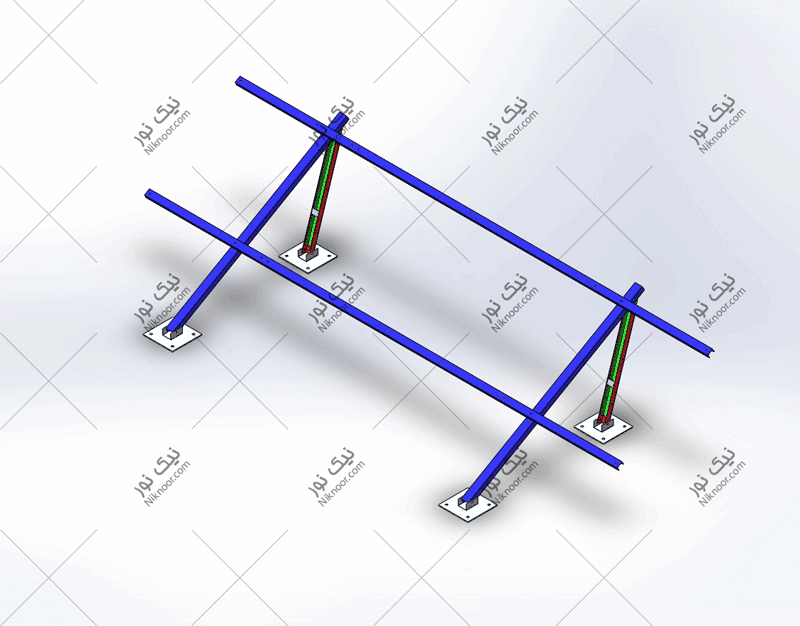
Features of Solar Base
- Panels are assembled vertically or horizontally side by side.
- The structure is made of ST37 steel.
- Structural components are coated with hot-dip galvanization or paint.
- It is possible to design and manufacture structures of various dimensions and sizes.
- Bolts, nuts, and welding are used to connect the components of the solar panel structure.
Structures can generally be divided into the following four categories:
- Fixed structure
- Structure for sloped surfaces
- Structure with adjustable angle and height
- Intelligent structure
Fixed Solar Panel Stand or Fixed Structure
This type of structure is among the most commonly used solar panel bases. It is typically designed and constructed either based on the location and type of panels or pre-made for panels ranging from 5 to 255 watts, with angles between 30 and 45 degrees. The material used for these structures is usually iron with a galvanized coating or aluminum, although in some cases, uncoated iron is also used.
These structures are generally designed and built for solar power plants based on specific standards, such as resistance to moisture, wind, and impact. Additionally, solar power plant structures typically consist of two rows to accommodate a greater number of panels on each row.
Adjustable Solar Panel Stand or Adjustable Structure
This type of structure is more expensive compared to fixed and sloped surface structures. Typically, it is portable and allows users to quickly install and relocate the solar package. Its construction is generally made of galvanized and aluminum angles, and in some cases, it adopts a radar-like form, enabling its angle to be adjusted not only relative to the surface but also around the main axis.
These structures are never used in solar power plants, as adjusting an entire power plant would require excessive time and cost.
Smart Solar Panel Stand or Intelligent Structure
This type of structure is exclusively designed for solar power plants with capacities exceeding 500 kilowatts. It consists of sensors, motors, and a control system, allowing its angle to be adjustable relative to its axis. The sunlight sensor measures the intensity of sunlight, and the control system adjusts the angle of the structure and solar panels using specialized motors to ensure the panels are always directly under sunlight throughout the day. This significantly improves the system’s efficiency.
This type of solar panel stand is also referred to as a solar tracker structure.
Solar Panel Stand for Inclined Surfaces or Inclined Structure
This type of structure is similar to the fixed solar panel stand, with the difference being that it is either made with shorter supports or entirely without supports, designed specifically for installing solar panels on inclined surfaces. Typically, this type of structure is not used in solar power plants and is exclusively intended for off-grid solar packages.
Share this page


